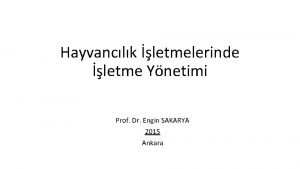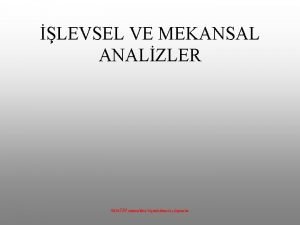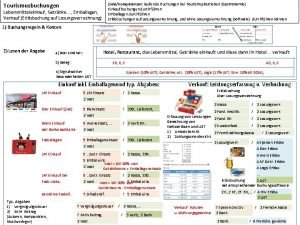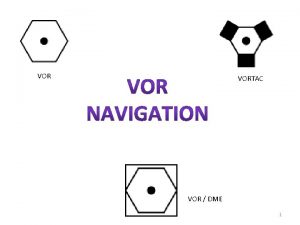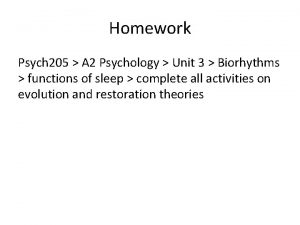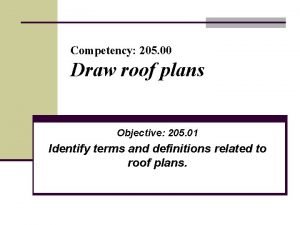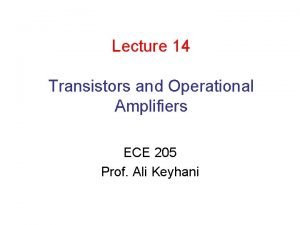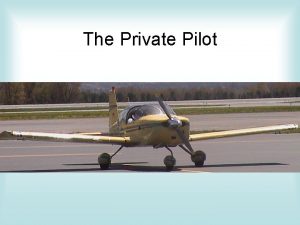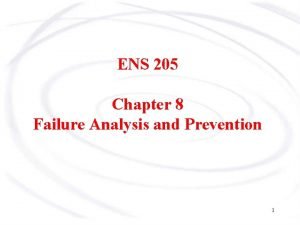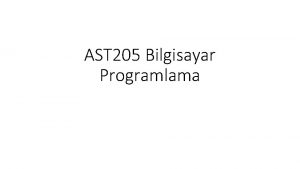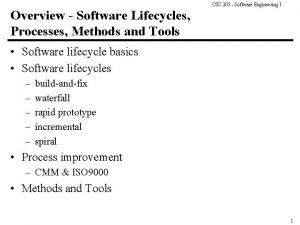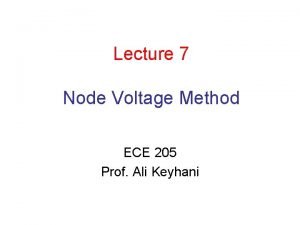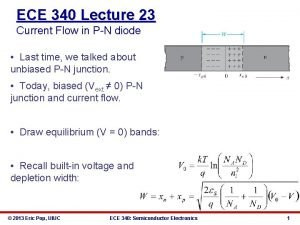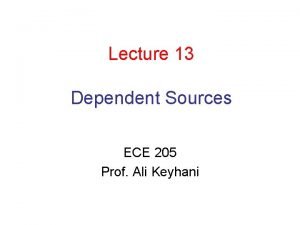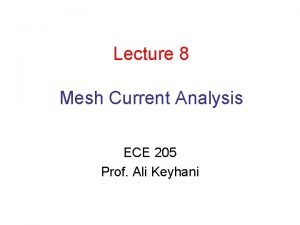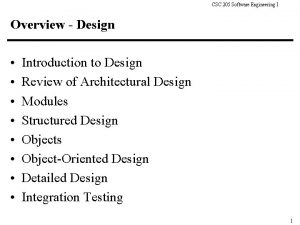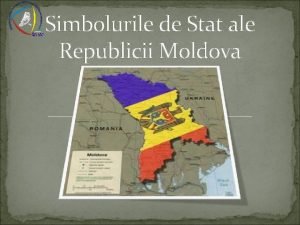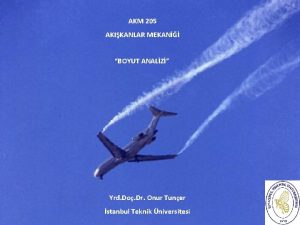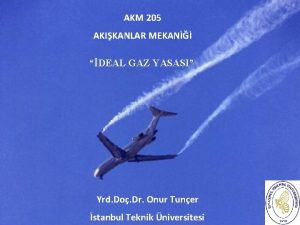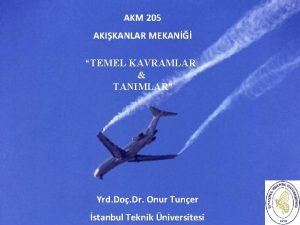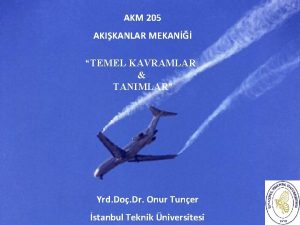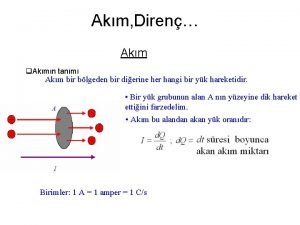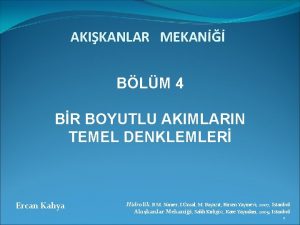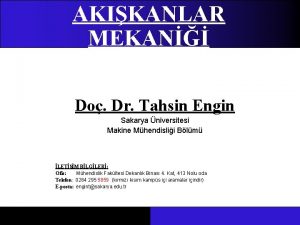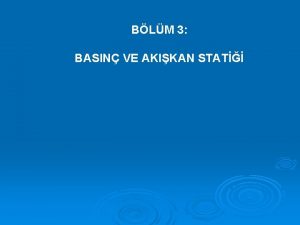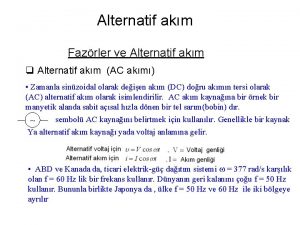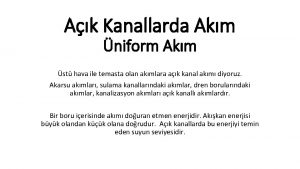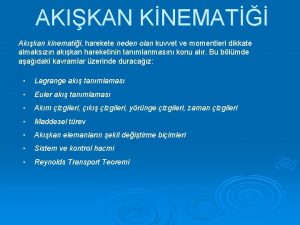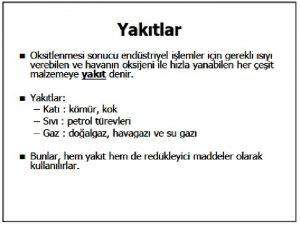AKM 205 AKIKANLAR MEKAN AKIKAN STAT Yrd Do





































- Slides: 37

AKM 205 AKIŞKANLAR MEKANİĞİ “AKIŞKAN STATİĞİ” Yrd. Doç. Dr. Onur Tunçer İstanbul Teknik Üniversitesi

Main Topics • • The Basic Equations of Fluid Statics Pressure Variation in a Static Fluid Hydrostatic Force on Submerged Surfaces Buoyancy

Definition of Pressure is defined as the amount of force exerted on a unit area of a substance:

Direction of fluid pressure on boundaries Furnace duct Pipe or tube Heat exchanger Pressure is a Normal Force (acts perpendicular to surfaces) It is also called a Surface Force Dam

Absolute and Gauge Pressure • Absolute pressure: The pressure of a fluid is expressed relative to that of vacuum (=0) • Gauge pressure: Pressure expressed as the difference between the pressure of the fluid and that of the surrounding atmosphere. Ø Usual pressure guages record guage pressure. To calculate absolute pressure:

Units for Pressure Unit 1 pascal (Pa) Definition or Relationship 1 kg m-1 s-2 1 bar 1 x 105 Pa 1 atmosphere (atm) 101, 325 Pa 1 torr 1 / 760 atm 760 mm Hg 1 atm 14. 696 pounds per sq. in. (psi) 1 atm

Pressure distribution for a fluid at rest Let’s determine the pressure distribution in a fluid at rest in which the only body force acting is due to gravity The sum of the forces acting on the fluid must equal zero

What are the z-direction forces? Let Pz and Pz+Dz denote the pressures at the base and top of the cube, where the elevations are z and z+Dz respectively. z y x

Pressure distribution for a fluid at rest A force balance in the z direction gives: For an infinitesimal element (Dz 0)

Incompressible fluid Liquids are incompressible i. e. their density is assumed to be constant: When we have a liquid with a free surface the pressure P at any depth below the free surface is: Po is the pressure at the free surface (Po=Patm) By using gauge pressures we can simply write:

The Basic Equations of Fluid Statics • Body Force

The Basic Equations of Fluid Statics • Surface Force

The Basic Equations of Fluid Statics • Surface Force

The Basic Equations of Fluid Statics • Surface Force

The Basic Equations of Fluid Statics • Total Force

The Basic Equations of Fluid Statics • Newton’s Second Law

The Basic Equations of Fluid Statics • Pressure-Height Relation

Pressure Variation in a Static Fluid • Incompressible Fluid: Manometers

Pressure Variation in a Static Fluid • Compressible Fluid: Ideal Gas Need additional information, e. g. , T(z) for atmosphere

Measurement of Pressure Manometers are devices in which one or more columns of a liquid are used to determine the pressure difference between two points. – U-tube manometer – Inclined-tube manometer

Measurement of Pressure Differences Apply the basic equation of static fluids to both legs of manometer, realizing that P 2=P 3.

Inclined Manometer • To measure small pressure differences need to magnify Rm some way.

Compressible Flow: Tall Mountains Natural gas well

Compressible Linear Temperature Gradient

Atmospheric Equations • Assume constant • Assume linear Temperature variation with altitude for the U. S. standard atmosphere

Buoyancy • A body immersed in a fluid experiences a vertical buoyant force equal to the weight of the fluid it displaces • A floating body displaces its own weight in the fluid in which it floats The upper surface of the body is subjected to a smaller force than the lower surface h 1 A net force is acting upwards Free liquid surface F 1 H h 2 F 2

Buoyancy The net force due to pressure in the vertical direction is: FB = F 2 - F 1 = (Pbottom - Ptop) (Dx. Dy) The pressure difference is: Pbottom – Ptop = r g (h 2 -h 1) = r g H Combining: FB = r g H (Dx. Dy) Thus the buoyant force is: FB = r g V

Buoyancy

Buoyancy For example, for a hot air balloon (Example Problem 3. 8):

Archimedes’ Principle • Any floating object displaces its own weight of fluid. Archimedes of Syracuse (287 BC – 212 BC) • Any object, wholly or partly immersed in a fluid, is buoyed up by a force equal to the weight of the fluid displaced by the object. Archimedes of Syracuse (287 BC – 212 BC ) Intoduction Chee 223 1. 30

Compressible fluid • Gases are compressible i. e. their density varies with temperature and pressure r =P M /RT – For small elevation changes (as in engineering applications, tanks, pipes etc) we can neglect the effect of elevation on pressure – In the general case start from:

Hydrostatic Force on Submerged Surfaces • Plane Submerged Surface

Hydrostatic Force on Submerged Surfaces • Plane Submerged Surface We can find FR, and y´ and x´, by integrating, or …

Hydrostatic Force on Submerged Surfaces • Plane Submerged Surface – Algebraic Equations – Total Pressure Force

Hydrostatic Force on Submerged Surfaces • Plane Submerged Surface – Algebraic Equations – Net Pressure Force

Hydrostatic Force on Submerged Surfaces • Curved Submerged Surface

Hydrostatic Force on Submerged Surfaces • Curved Submerged Surface – Horizontal Force = Equivalent Vertical Plane Force – Vertical Force = Weight of Fluid Directly Above (+ Free Surface Pressure Force)
 Fayda yaratma şekilleri nelerdir
Fayda yaratma şekilleri nelerdir Sweden
Sweden Mekan tanımlayıcı elemanlar
Mekan tanımlayıcı elemanlar Akm text
Akm text Akm nedir
Akm nedir Akm beitrag verbuchen
Akm beitrag verbuchen Far91.205
Far91.205 Eet 205
Eet 205 Psych 205
Psych 205 Gable roof plan
Gable roof plan Ece 205
Ece 205 Ar for ncoer
Ar for ncoer Far91.205
Far91.205 Ens 205
Ens 205 Far91.205
Far91.205 Ncsu webassign
Ncsu webassign Ast 205
Ast 205 Csc 205
Csc 205 Far91.205
Far91.205 Lafayette school newark nj
Lafayette school newark nj Ece 205
Ece 205 Ece 205 uiuc
Ece 205 uiuc 427 266 to the nearest ten thousand
427 266 to the nearest ten thousand Sia 205
Sia 205 Stoichiometry flowchart
Stoichiometry flowchart Ncoer regulation ar 623-205
Ncoer regulation ar 623-205 18 usc 205
18 usc 205 Eco 205
Eco 205 Item 205
Item 205 Node voltage analysis with dependent sources
Node voltage analysis with dependent sources Mesh current method
Mesh current method Csc 205
Csc 205 Phy 205
Phy 205 Eet205 notes
Eet205 notes 205 to binary
205 to binary A race car can travel at a rate of 205 miles per hour
A race car can travel at a rate of 205 miles per hour Th1bet
Th1bet Care sunt simbolurile de stat ale republicii moldova
Care sunt simbolurile de stat ale republicii moldova
